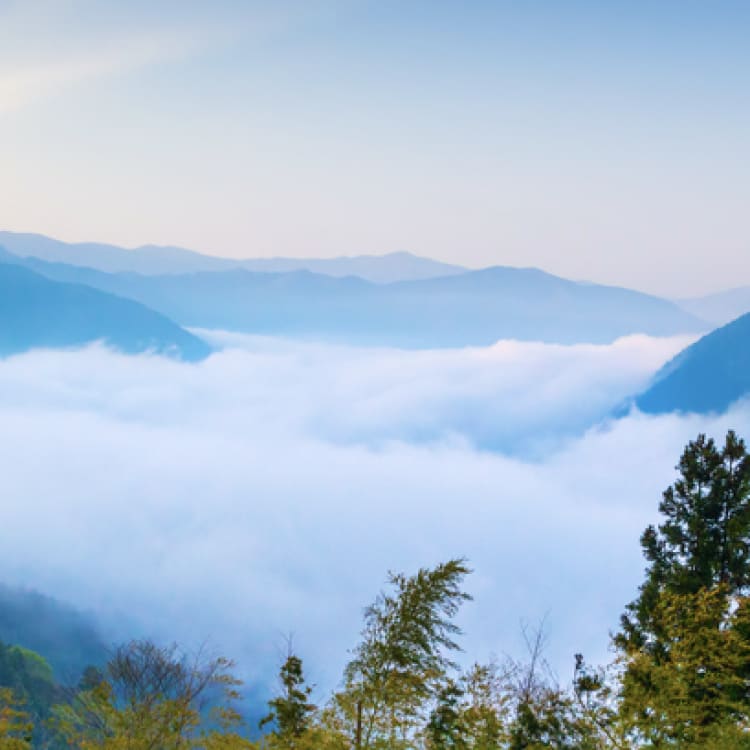
STORY Avoid the crowds on the other side of Japan
Finding crowd-worthy destinations in Japan that don’t attract big crowds? Difficult, but not impossible.
Many of them are found on the other side of Japan, tucked away in the country’s regional prefectures.
Here are just 5 spots where you can experience the ‘real deal’ Japan without having to stand shoulder to shoulder with your fellow travellers.

Hida Furukawa
You’ve probably heard of Takayama.
But, how about its quieter little sister town?
Hida Furukawa is located in Gifu downriver from Takayama, and is just as atmospheric as its famous neighbouring town, but much more tranquil and relaxed.
The old town features preserved buildings from the Edo Period that have been lovingly restored by local master carpenters, and makes for a delightful stroll during the day. Furukawa puts on a special show during spring and autumn, when the cherry blossoms and fiery autumn leaves paint the town in vibrant colour.
Like Takayama, Furukawa also hosts a famous festival each year. The Furukawa Festival, held one week after the Takayama Spring Festival, features large drums, dance and beautifully decorated floats.
How to Get There
Hida Furukawa is accessible by train from Takayama City.
From Takayama Station, take the Takayama Line to Hida Furukawa Station. The trip takes about 15 minutes.
Alternatively, several Hida limited express trains from Nagoya continue through to Hida Furukawa, with a one-way journey from Nagoya taking around 3 hours.

Mombetsu
The Okhotsk coast up in the northeast of Hokkaido is famous for the fabled drift ice that blankets the secluded shores each winter. The sparsely populated area of Mombetsu runs icebreaker boat tours and is one of the best places to witness the incredible sight of miles of drift ice floating south in winter.
If you plan on heading up there in summer, hiring a car is the best way to avoid the crowds and take in the breathtaking coastal scenery. For some of the best viewing spots, be sure to visit Lake Komuke or the Omusaro Genseikaen wildflower garden either side of Mombetsu.
How to Get There
There is a daily flight from Tokyo Haneda Airport to Okhotsk Mombetsu Airport and it takes around 1 hour and 45 minutes.
Buses from Sapporo to Mombetsu take about five and a half hours and buses from Asahikawa take a little over three hours.

Miyoshi
Head to Miyoshi and take to the clouds to avoid the crowds!
Surrounded on all four sides by lush, green forest, Miyoshi’s majestic sea of clouds (unkai), floats over the city along the Yoshino River through Iya Valley. Best witnessed in the early morning in March to April or October to December, this spectacular site is best experienced from above from the Ahashi/Unkai Outlook.
Miyoshi is also a haven for outdoor adventurers in the know.
The nearby Oboke and Koboke, narrow canyons near the edge of the Iya Valley, play host to some of Japan's most adventurous activities, including whitewater rafting, canyoning and river kayaking. If you want to explore the valley but aren’t looking to get your heart rate up, the Oboke Sightseeing Boat Cruise offers a 30 minute ride through the gorge, touring through tranquil parts that can be appreciated in all four seasons.
How to Get There
Miyoshi City is serviced by JR Trains (Dosan Line and Tokushima Line) as well as highway buses to/from Osaka and Kobe. The town centre of Ikeda acts as the central transportation hub for both entering the city and for travel within.
The clouds are best viewed in the early morning from the Ahashi/Unkai Outlook. Keep in mind, reaching the outlook involves a 1 hour walk. Booking a car/taxi is recommended but it can be reached by public transport.

Amakusa Islands
In the Amakusa Islands, the only crowds you’ll encounter are schools of tropical fish!
One of Japan’s most secluded diving spots, this expansive island chain straddles Kumamoto with five bridges connecting some of the main islands. The sea around the Amakusa Islands is inhabited by a vast array of colourful tropical fish species, which dart in and out of the area's coral reef formations.
Above water, the islands offer an abundance of beaches, historic church sites and museums as Amakusa became one of Japan’s main centres of Christianity during a time when it was banned.
How to Get There
Amakusa is accessible via plane, ferry or bus. The 3 main islands are also connected by bridges with the Kyushu mainland.
Daily flights for Amakusa Airport depart from Osaka, Fukuoka, and Kumamoto, and hourly buses depart from Kumamoto Station.
Ferries are available from Kuchinotsu Port in Nagasaki, Kuranomoto in Kagoshima, and Misumi East Port in Kumamoto (the best option for JR Rail Pass holders) and offer a great scenic alternative.
Once in Amakusa, a rental car is the best option for exploring the island, as buses are infrequent.
Quick tips to avoid the crowds
Wake up early
If it’s a popular attraction, get there as soon as it opens. If it doesn’t have an opening time, go even earlier. Many tour buses don’t arrive until 10-11am to sites, giving you the perfect window to get in before the masses.
Find a different, but similar, place to visit
Where possible, look for places that offer a similar experience to the more popular destinations. For example, Hida Furukawa offers a crowd-free experience that is very similar to that of the more popular Takayama.
Avoid peak times
This one seems pretty obvious, but it makes a huge difference to do your homework before setting your itinerary. Generally speaking, weekends and public holidays are always busier at popular tourist sites because kids and parents are free from school and work commitments, making weekdays best for famous sites. Also avoid using public transport during peak commute times before and after work.



















































